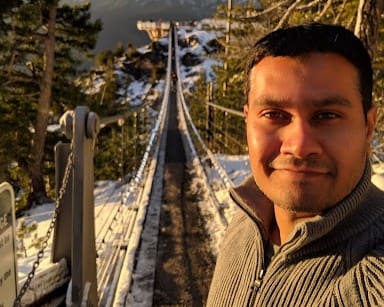Real-time performance in ML enabled distributed systems requires more than just good engineering. It’s about building intelligent, resilient infrastructure that adapts to user behavior and holds up under pressure. For Rutvij Shah, a software engineer with deep experience in mobile application development and Android engineering, this is where architecture and innovation meet.
A published author of the scholarly paper “AI-Driven Threat Intelligence Systems: Predictive Cybersecurity Models for Adaptive IT Defense Mechanisms”, Rutvij Shah has helped advance the conversation on predictive cybersecurity in large-scale systems. In the paper, he outlines how AI and machine learning models can enhance threat detection and automate defense mechanisms across platforms. “Performance engineering is about trust,” he explains. “You need to design systems that users can trust, no matter the load or complexity”—a principle that applies equally to infrastructure resilience and cybersecurity strategy.
This is evident throughout Rutvij’s work, especially in distributed systems powered by ML where scale, speed and user satisfaction have to be optimized – all at the same time.
Architecting for Agility and Real-Time Stability
While machine learning has rapidly matured, deploying it in distributed environments still presents architectural and operational hurdles. According to Rutvij Shah, a seasoned Android engineer and systems architect, the key to solving these challenges begins not with code, but with foundational design. “The key to engineering performance isn’t just speed—it’s building the confidence that systems will behave as expected when demand peaks,” he explains.
This mindset was put into action during his time at ClassDojo, a widely used education platform serving millions of teachers and families worldwide. In May 2019, the app faced a critical login issue, with over 4,000 users trapped in a frustrating redirect loop. Rutvij led the rapid-response effort. Within days, monitoring systems and interim fixes were deployed, reducing the affected user count to 500.
This blend of hands-on execution and systems thinking also shaped his perspective on mobile intelligence. In his past press, How Machine Learning Is Shaping the Future of Android Apps, Rutvij explores how intelligent mobile interfaces are no longer a luxury, but a baseline user expectation. His writing emphasizes the need for resilient architecture that supports both predictive intelligence and platform stability—an outlook that consistently defines his engineering work.
Taming Latency – The ML + Real-Time Equation
One of the biggest challenges in ML enabled systems is balancing the computational complexity of machine learning with the real time responsiveness users expect. As Rutvij says “Inference at scale is not about bigger models—it’s about smarter placement.”
In his approach, deploying lightweight models and using edge computing or distributed inference nodes helps reduce latency. Especially in mobile environments, placing ML capabilities closer to the user—on-device or in-region—can make a huge difference. He’s applied this across several systems with a focus on mobile-first engineering.
His Android engineering background reinforces the importance of prioritizing time sensitive operations like login or messaging. Non-essential ML processes like background recommendation engines or long term user modeling should be decoupled from critical paths. “The magic is in making ML invisible to the user—but essential to the experience,” Rutvij says.
Tuning Load from Edge to Backend
When approaching distributed systems, Rutvij Shah encourages engineers to shift their mindset: every user’s device isn’t just a client—it’s a node in the system. This edge-first thinking has informed much of his work in optimizing performance at scale. “Think of each user’s phone as a distributed node. Optimization begins where the user interacts,” he explains.
At ClassDojo, this meant more than backend tuning. It involved real-time sync, distributed state management, and intelligent load balancing across the mobile app—all designed to preserve responsiveness while minimizing resource consumption. The result was a system that scaled smoothly under pressure and delivered a consistent experience even during peak usage.
From an infrastructure standpoint, these optimizations enabled ClassDojo to handle unexpected traffic surges without overwhelming backend services. And on the frontend, Rutvij applied performance-aware design principles to ensure the mobile experience remained seamless, even on low-bandwidth devices.
His ability to think holistically across edge and cloud has also been recognized beyond engineering teams. As a member of the Technical Paper Review Board at the International Conference On Engineering Trends In Education Systems & Sustainability, Rutvij evaluates breakthrough innovations that challenge conventional systems. That same instinct for scalable, user-first design continues to guide how he builds and reviews technical solutions today.
Observability as a Catalyst for Engineering Quality
Observability isn’t just a DevOps buzzword for Rutvij—it’s a fundamental aspect of system health. “You can’t improve what you can’t observe,” he says. That mindset was at play when he responded to the ClassDojo incident where real-time logs and user journey tracing helped him find the root cause and resolve the issue faster.
Post-incident, Rutvij pushed for permanent observability tools that had dashboards, latency alerts and error tracing across both backend and mobile layers. These tools didn’t just prevent future issues—they created a culture of proactive performance tuning that’s now part of the organization’s engineering workflow.
What’s Next – Adaptive and Self-Optimizing Systems
As real-time systems get smarter, Rutvij believes performance optimization will move from reactive tuning to adaptive intelligence. This means systems will use real-world feedback and reinforcement learning to optimize themselves dynamically.
He’s excited about federated learning and decentralized inference architectures which bring AI closer to the user while respecting privacy and minimizing server load. “We’re moving towards systems that evolve with usage, continuously adapting to new data and behavior,” Rutvij says.
His advice to mobile engineers and architects? “Understand the cost of every millisecond. Then build as if those milliseconds belong to your user.” That principle still guides his work as both a practitioner and thought leader in high-performance, ML-powered systems.
Rutvij Shah’s is a mobile application development, Android engineering and performance optimization expert who has been instrumental in driving the success of scalable ML-powered systems. By focusing on observability, scalability and intelligent system design, Rutvij is helping shape the future of performance optimization in real-time distributed systems.

